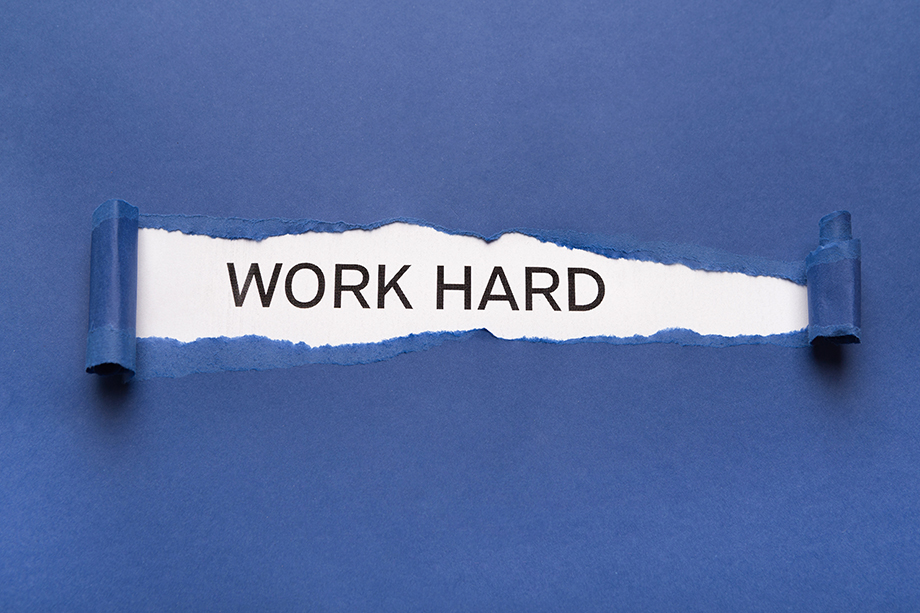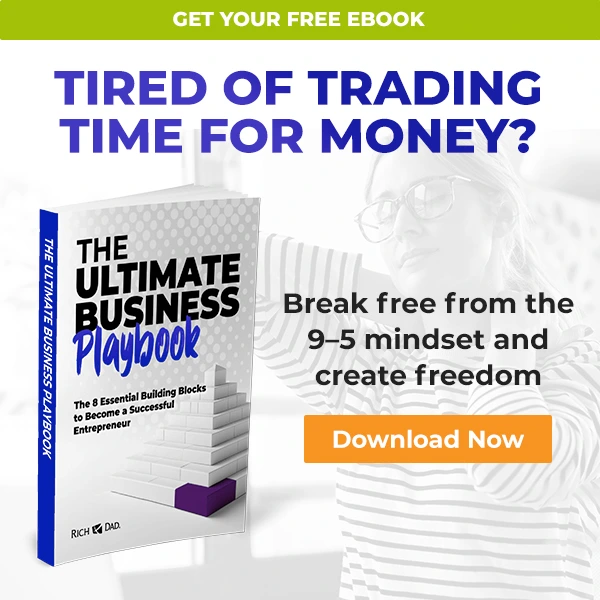Most entrepreneurs think they’ve escaped the rat race the moment they quit their 9-to-5 job and start their own business. But here’s the harsh reality: they’ve actually created a worse kind of prison for themselves.
Think about it. As an employee, you might work 40-50 hours a week. But as a business owner? You’re probably working 60, 70, maybe even 80 hours a week. You can’t take a vacation without your phone ringing constantly. You can’t get sick without worrying about what’s happening at the office. You’ve become a slave to your own creation.
Robert Kiyosaki calls this being stuck in the S quadrant of the Cashflow Quadrant—self employed but not truly free. The good news? There’s a way out. And it starts with understanding that your ultimate goal shouldn’t be to build a business—it should be to build a system.
The entrepreneur’s dilemma: Building a job vs. building an asset
Let’s get one thing straight right from the start. If your business can’t run without you, you don’t own a business—you own a job. And probably a more demanding, stressful job than the one you left behind.
The wealthy understand something that most entrepreneurs miss: the goal isn’t to create income through your personal effort. The goal is to create systems that generate income whether you’re there or not. That’s the difference between being self-employed and being a true business owner.
When you look at truly successful entrepreneurs—the ones who have achieved real financial freedom—they all have one thing in common. They’ve built businesses that operate as systems, not as extensions of themselves.
Take McDonald’s, for example. Ray Kroc didn’t become a billionaire because he could flip the best burger. He became a billionaire because he created a system that could produce consistent results without his personal involvement. Most of us can cook a better hamburger than McDonald’s, but few of us can build a better business system.
The B-I Triangle: Your blueprint for building systems
Robert Kiyosaki’s mentor, Rich Dad, taught him that a truly successful business was built on systems and that the product didn’t have to be the best if the systems were world class. This wisdom is captured in what’s known as the B-I Triangle.
The B-I Triangle represents a strong system of systems, supported by a team with a leader, all working towards a common mission. It’s made of eight vital components, each essential for success—the most important foundations being Mission, Leadership, and Team.
Here’s what makes the B-I Triangle so powerful: it puts the product in the smallest portion of the triangle. Why? Because as Rich Dad said, “The product is the least important piece to inspect when evaluating a business.”
The eight integrities of business freedom
1. Mission: This is your “why.” Without a clear mission that inspires others, you’ll always be the driving force behind your business.
3. Team: You can’t build systems without the right people. The goal is to hire people who are better than you at specific functions.
4. Cash Flow: Cash flow always follows management. If you’re personally managing cash flow, you’re stuck in the business.
5. Communications: Systems require clear, documented processes that anyone can follow.
6. Systems: This is the heart of your exit strategy. Systems + Ideas make you rich.
7. Legal: Proper legal structures protect your assets and allow for easier transitions.
8. Product: Notice this comes last. Your product should serve the system, not the other way around.
The four phases of the entrepreneur’s exit strategy
Building a business that runs without you doesn’t happen overnight. It’s a deliberate process that unfolds in four distinct phases:
Phase 1: The transition from employee to self-employed
This is where most entrepreneurs start. You’ve left your job, and now you’re doing everything yourself. You’re the salesperson, the accountant, the customer service rep, and the janitor. This phase is necessary, but it’s also dangerous if you stay here too long.
The key during this phase is to start documenting everything you do. Every process, every system, every interaction with customers should be recorded. You’re not just running a business —you’re building the instruction manual for how that business operates.
Phase 2: Building your first systems
This is where you start moving from the S to the B quadrant. You begin hiring people and creating systems that don’t depend on your personal involvement.
The mistake most entrepreneurs make here is trying to hire people to do exactly what they do. Instead, you should be hiring people to run systems that produce the results you want. There’s a big difference.
When you hire someone to do what you do, you’re just creating another version of yourself. When you hire someone to run a system, you’re creating scalability.
Phase 3: The management system
In this phase, your job transforms from doing the work to managing the people who manage the systems. This is where many entrepreneurs struggle because it requires a completely different skill set.
You’re no longer the technician—you’re the architect. You’re no longer the player—you’re the coach. This transition requires serious personal development and often feels uncomfortable because you’re moving away from what made you successful in the first place.
Phase 4: The investment phase
This is the ultimate goal: your business generates income without your daily involvement. You’ve successfully moved from the B quadrant to the I quadrant of the Cashflow Quadrant. Your business has become an asset that produces passive income.
At this point, you can choose to stay involved because you enjoy it, not because the business needs you. You’re free to pursue other investments, spend time with family, or use the power of play to escape the rat race in other areas of your life.
The psychology of letting go
Here’s where most entrepreneurs get stuck: they’re afraid to let go. And honestly, that fear makes sense. Your business is your baby. You’ve poured your heart, soul, and probably your life savings into it. The thought of it operating without you can be terrifying.
But this fear is exactly what keeps you trapped in the rat race. As long as you believe that you’re indispensable to your business, you’ll never be free from it.
The wealthy think differently. They understand that the goal isn’t to be needed—it’s to be valuable. When you build systems that work without you, you become valuable as an owner, not necessary as an operator.
Building systems that work without you
So how do you actually build a business that runs without you? It starts with shifting your mindset from “How do I do this?” to “How do we do this?”
Document everything
Every process in your business should be documented to the point where someone with no prior experience could follow the instructions and get consistent results. This includes:
- Customer acquisition processes
- Sales procedures
- Product development workflows
- Customer service protocols
- Financial management systems
- Quality control measures
Create accountability systems
Systems without accountability are just suggestions. You need metrics, reports, and feedback loops that ensure your systems are being followed and producing the desired results.
Build redundancy
Never build a system that depends on one person. If only one person knows how to do something critical in your business, you don’t have a system—you have a single point of failure.
Test and refine
Want to be a successful entrepreneur? Part of your financial education is learning from your failures. Your systems will never be perfect from day one. You need to constantly test, measure, and refine them.
The financial side of your exit strategy
While you’re building systems, you should also be building wealth outside of your business. This is crucial because it gives you the financial freedom to make decisions based on what’s best for the business, not what you need to pay your bills.
Reinvest in income-producing assets
As your business starts generating cash flow that doesn’t require your direct involvement, resist the temptation to increase your lifestyle. Instead, invest for passive income in assets like real estate, stocks, or other businesses.
Diversify your income streams
Your business should be one of several income streams, not your only source of income. The wealthy never depend on a single source of income because they understand that diversification provides security and options.
Plan your tax strategy
Successful businesses focus on systems, not products, and this includes tax systems. Work with qualified professionals to structure your business and investments in the most tax-efficient way possible.
Common mistakes that keep entrepreneurs trapped
Mistake #1: Perfectionism
Many entrepreneurs never delegate because they believe no one can do the job as well as they can. This might be true initially, but it’s a recipe for permanent imprisonment. The goal isn’t perfection—it’s consistency and scalability.
Mistake #2: Underestimating the time investment
Building systems takes time—often much longer than entrepreneurs expect. You might need to invest 2-3 years of intensive work to build systems that will give you a lifetime of freedom. Most entrepreneurs aren’t willing to make this investment.
Mistake #3: Skipping the documentation phase
It’s tempting to think that you can just hire smart people and they’ll figure it out. But without documented systems, you’re asking people to reinvent the wheel every time. This leads to inconsistency and frustration.
Mistake #4: Not developing leadership skills
As the business owner, your job is to develop other leaders who can run the business in your absence. If you haven’t developed leadership skills yourself, you can’t develop them in others.
The ultimate exit: From business owner to investor
The end goal of this entire process isn’t just to build a business that runs without you—it’s to build a business that’s so systematized and valuable that someone else wants to buy it.
When you’ve successfully built a business with strong systems, multiple income streams, and a competent management team, you’ve created something truly valuable. You’ve created an asset that produces income without the new owner’s personal involvement.
This is when you have real options. You can:
- Sell the business outright and invest the proceeds
- Sell a portion and remain as an investor
- Keep the business and use it as a cash cow to fund other investments
- Expand the business into new markets or locations
The freedom that comes after
When you successfully execute an entrepreneur’s exit strategy, you don’t just gain financial freedom—you gain time freedom. And time freedom is the ultimate luxury.
You can spend time with family without constantly checking your phone. You can travel without worrying about what’s happening at the office. You can pursue hobbies, learn new skills, or explore investment opportunities without being tied to your business.
Most importantly, you can start thinking like an investor instead of an operator. You can evaluate opportunities based on their potential returns, not on whether you have the time to personally manage them.
Your action plan: Starting today
If you’re ready to begin your journey from business owner to investor, here’s what you need to do:
Step 1: Assess where you are
Honestly evaluate your current business using the B-I Triangle. Which of the eight integrities are strong? Which are weak? If any of the five levels in the B-I Triangle are weak and the management is not prepared to strengthen them, it is best to walk away from the investment.
Step 2: Create your documentation system
Start documenting every process in your business. Begin with the most critical functions and work your way down.
Step 3: Identify your first hire
Look at your documented processes and identify which functions could be handled by someone else. Your first hire should free up your time to work on systems, not just give you more to manage.
Step 4: Build your management dashboard
Create systems for tracking the key metrics that matter in your business. You can’t manage what you don’t measure.
Step 5: Start building passive income
Begin investing in assets outside your business. Learn how to turn ordinary income into passive income through real estate, stocks, or other businesses.
The long-term vision: True financial freedom
Remember, the goal isn’t just to escape the rat race—it’s to achieve true financial freedom. That means having enough passive income to cover your expenses whether you work or not.
When you’ve built a business with strong systems and diversified your income through other investments, you’ve achieved something that very few people ever accomplish: complete financial independence.
You’ve moved from the left side of the Cashflow Quadrant (E and S) to the right side (B and I). You’ve transformed from someone who works for money to someone whose money works for them.
This is the entrepreneur’s ultimate exit strategy: building a business so systematized and valuable that it becomes just one of many assets in your investment portfolio. When you reach this point, you haven’t just escaped the rat race—you’ve graduated to a completely different game.
The question isn’t whether this is possible—successful entrepreneurs do it every day. The question is whether you’re willing to do the work required to build the systems that will set you free.
Your future self is counting on the decisions you make today. Choose to build systems. Choose to invest in passive income. Choose to work toward the day when your business runs without you.
Because on that day, you won’t just be a successful entrepreneur—you’ll be truly free.
Ready to start building your exit strategy? Explore Robert Kiyosaki’s investing education and discover how to move from the S to B quadrant with proven systems and strategies.





